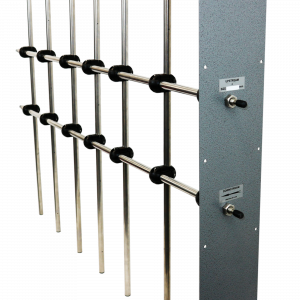Utilising Wilson Flowgrids Improves Building Accreditation
Home / News & Features / Utilising Wilson Flowgrids Improves Building Accreditation
Jan 24, 2022 |
SMART BUILDINGS
measurement instrumentation and LEED® green building program credits
Energy saving and sustainability, indoor air quality and environmental comfort are increasingly the objectives for our new “intelligent” buildings. Recent times have seen the birth of internationally recognized rating systems, which make it possible to quantify the achievement of these objectives.

LEED® is a voluntary certification program which can be applied to any type of construction (residential or commercial) and that recognizes the performance of buildings in key areas, such as:
• energy and water saving
• reduction of CO2 emissions
• ecological quality of the materials and resources used
• project and site selection.
The system is based on the allocation of ‘credits’ for each requirement. The sum of the credits constitutes the 4 levels of certification: basic, gold, silver, platinum
In relation to Air Quality, there are minimum performance requirements for air quality in a building to protect the health of the occupants, improve the quality of the inhabited space and achieve the requisite conditions of comfort.
All projects should, as a minimum, comply with the ventilation rates indicated in EN15251 (Class II). For non-residential buildings, reference should be made to “non polluting building” category and design criteria of EN13779.
With LEED EQc1: OUTDOOR AIR DELIVERY MONITORING, to achieve accreditation points you are required to “Install continuous monitoring systems of the fresh air to ensure the maintenance of minimum design ventilation requirements. Configure all components of the systems monitoring to generate an alarm signal when the levels of the deviation of the CO2 values vary from design values by 10% or more; the alarm generated by the automatic system must be sent to the building manager or, through a visual and audio alarm, to the occupants of the building AND Monitor CO2 concentrations within all densely occupied spaces i.e., those with a design occupant density of 25 people or more per 95m2 ; CO2 monitors must be between 1 and 2m above the floor. Provide a direct outdoor airflow measurement device capable of measuring the minimum outdoor air intake flow with an accuracy of ±15% of the design minimum outdoor air rate, based on the value determined in IEQ Prerequisite 1: Minimum IAQ Performance, for mechanical ventilation systems where 20%+ of the design supply airflow serves non-densely occupied spaces”.

Wilson Flowgrid
This can be achieved utilising measuring devices such as Wilson Flowgrids – Sensing Precision’s most accurate flow grid for measurement and primary control of airflow. The differential pressure output signal is directly related to volume flow within the duct and when used with a pressure transmitter can be used to accurately control volume flow. All Wilson Flowgrids generate “enhanced” differential pressure signals which directly relate to volume flow within the duct; Use with a pressure transmitter produces an instrument with ‘real time’ flow measurement accuracy usually associated with clean rooms and data centres. In general HVAC applications, it will greatly improve effectiveness of building management systems and enhancing energy efficiency and IAQ.The Wilson Flowgrid is calibratable to better than ±2%, of volume flow, far within precision levels required by the LEED protocols.
This level of accuracy saves energy in the system, and ensures the HVAC system is not under ventilating causing IAQ issues and/or Sick Building Syndrome.
The LEED® certification trademark is owned by the U.S. Green Building Council and is used with permission.
